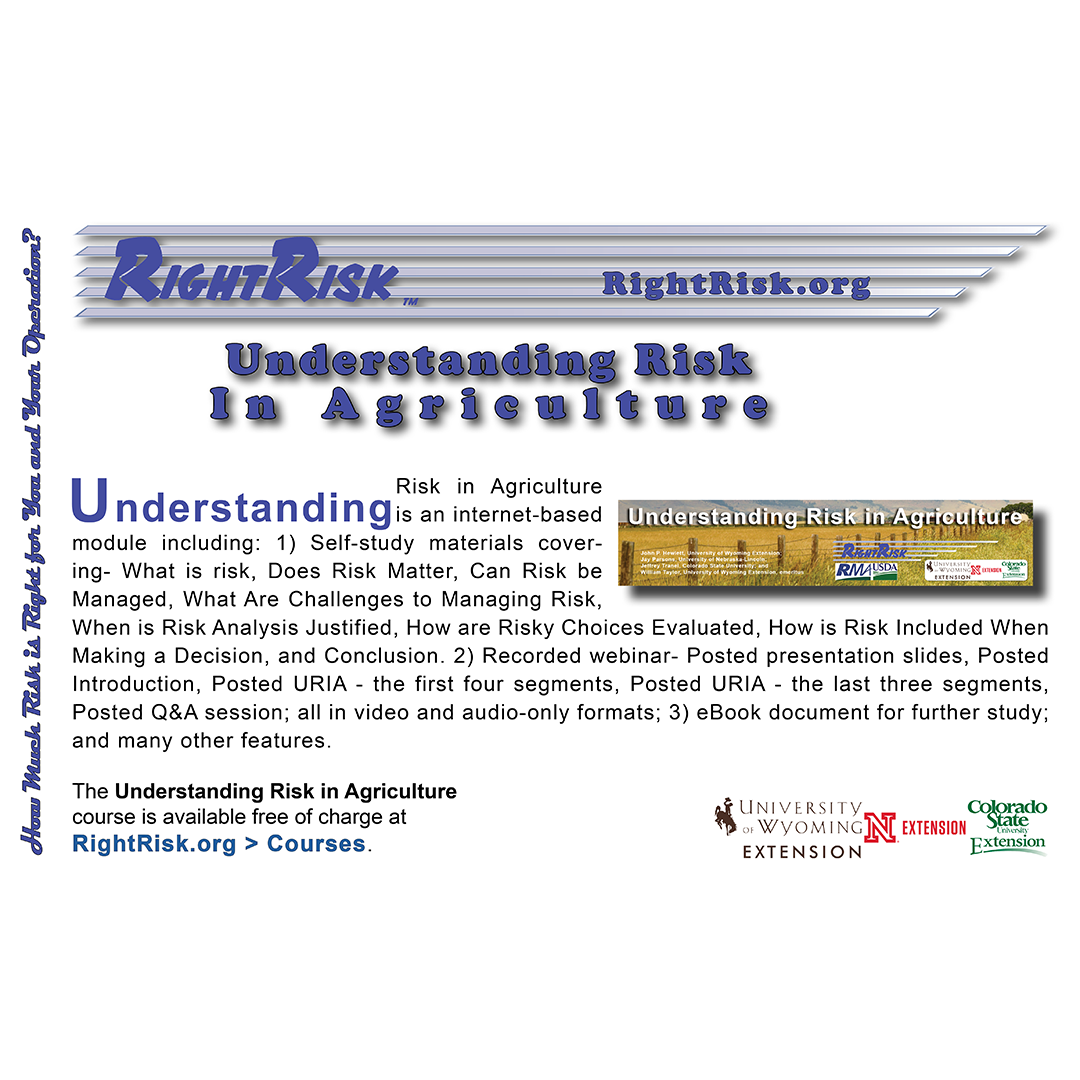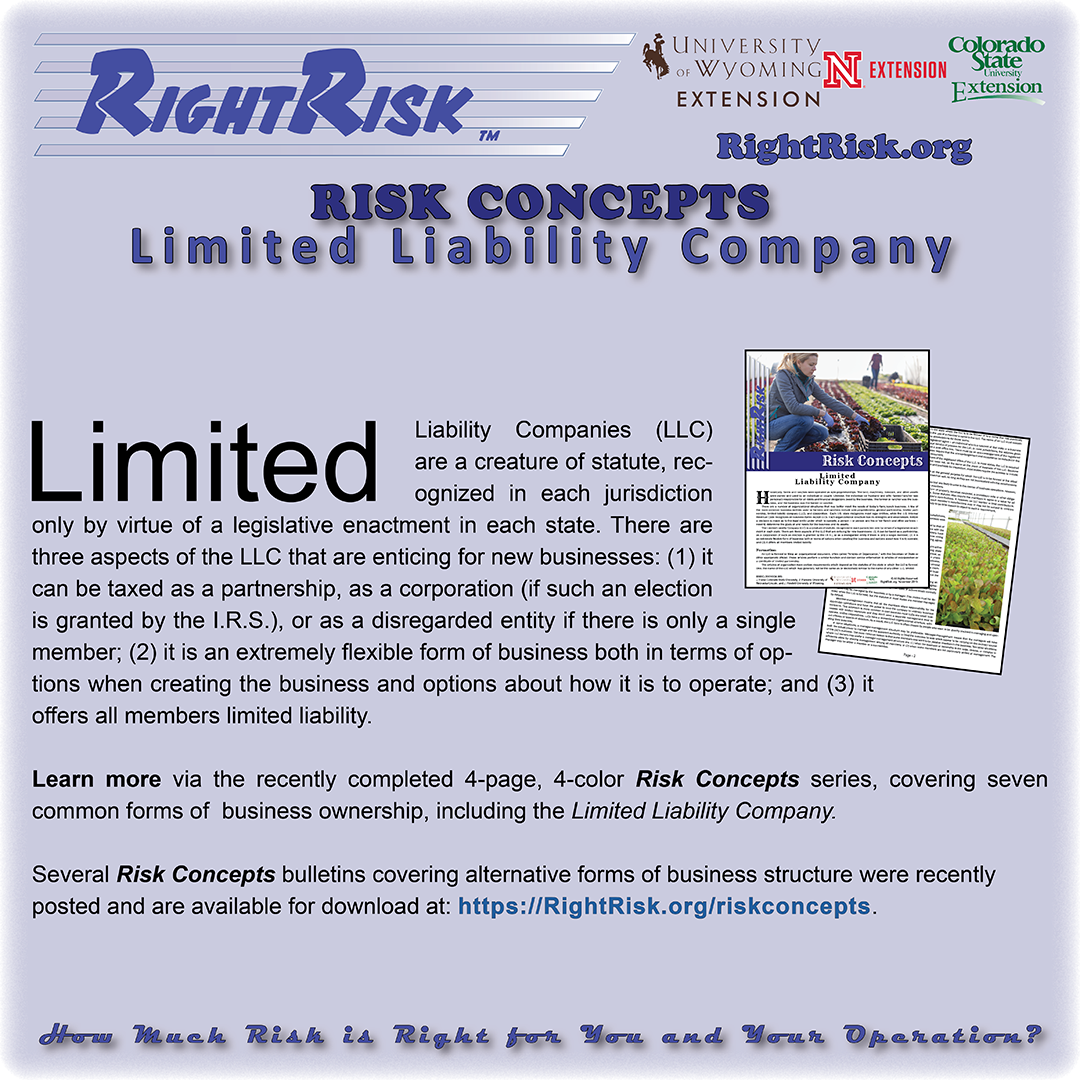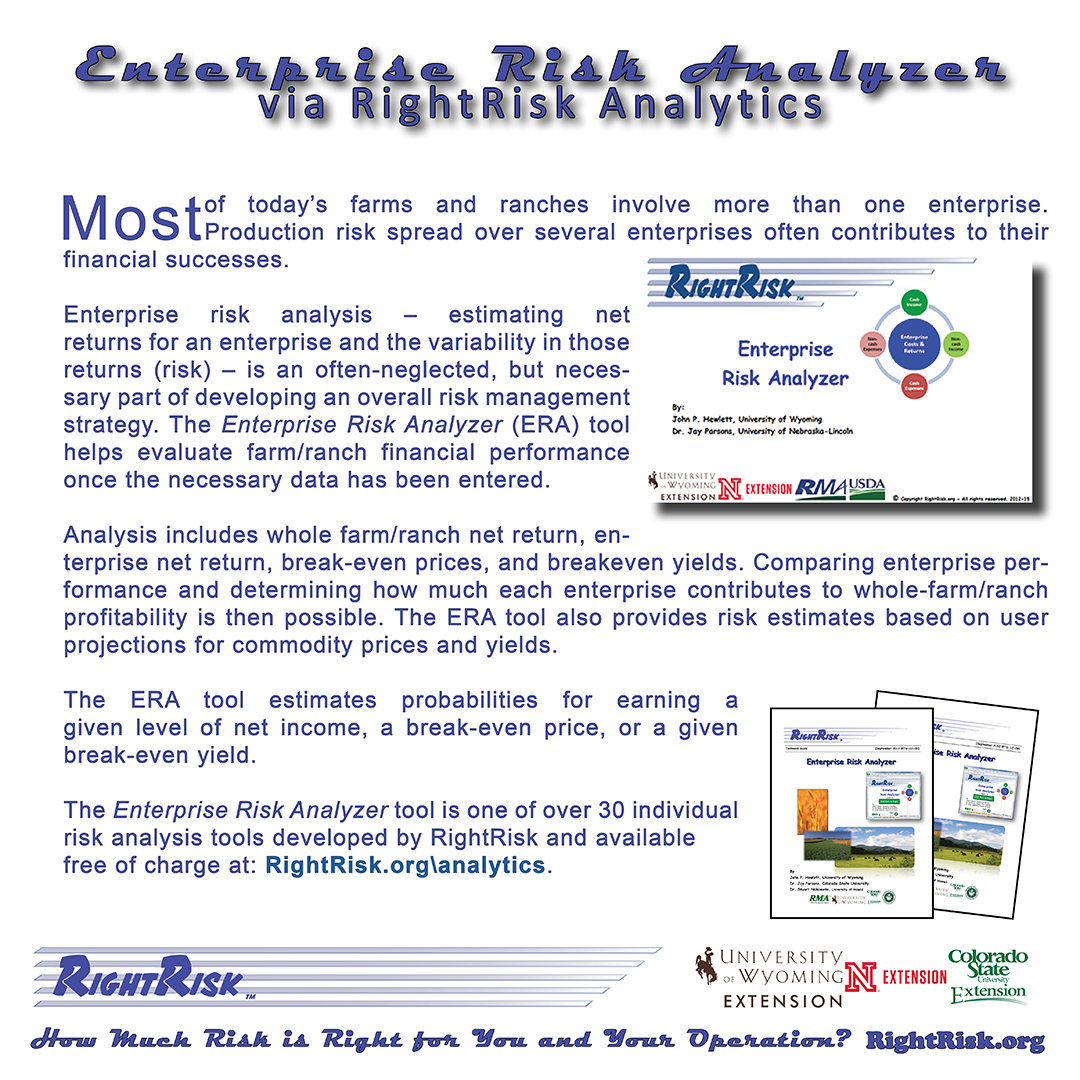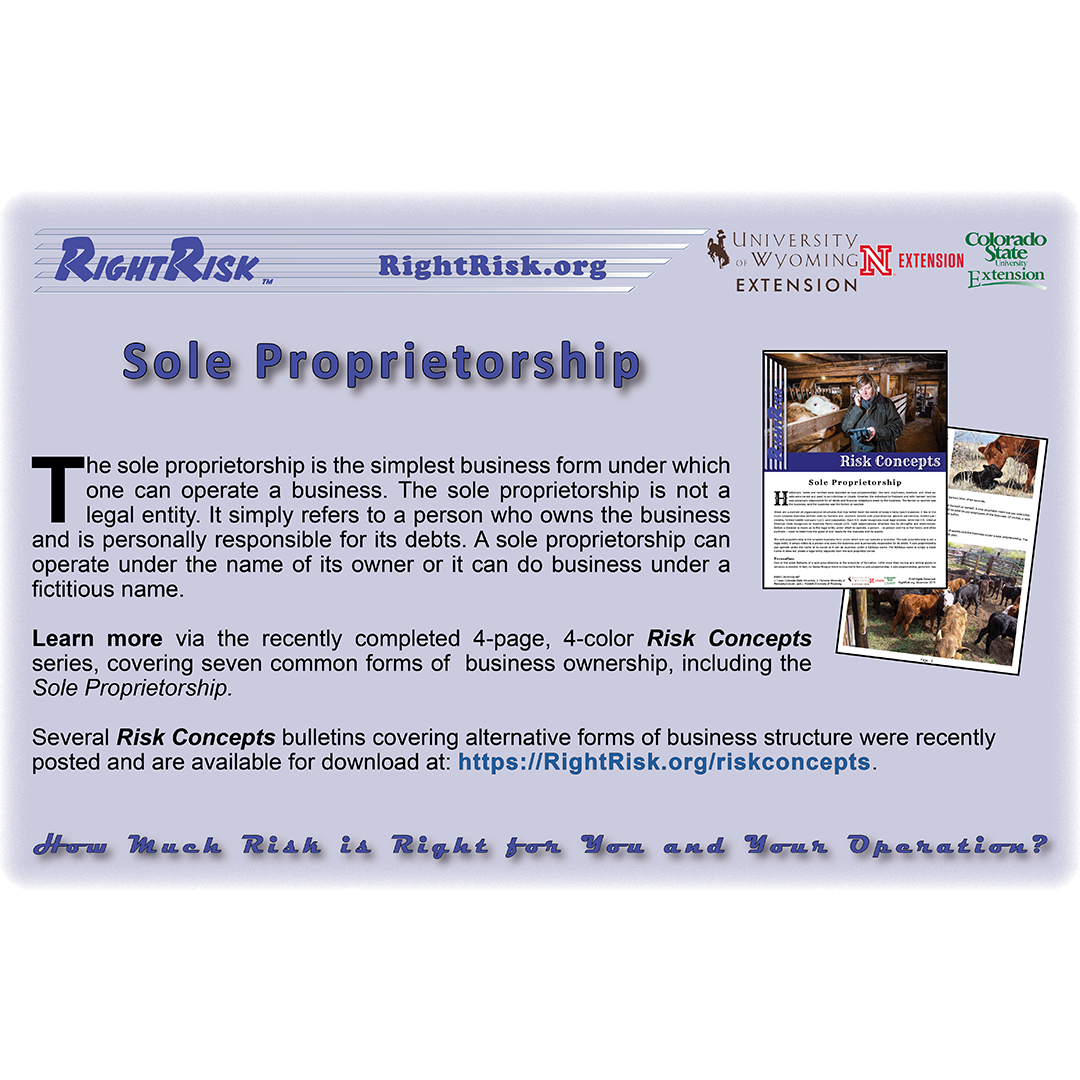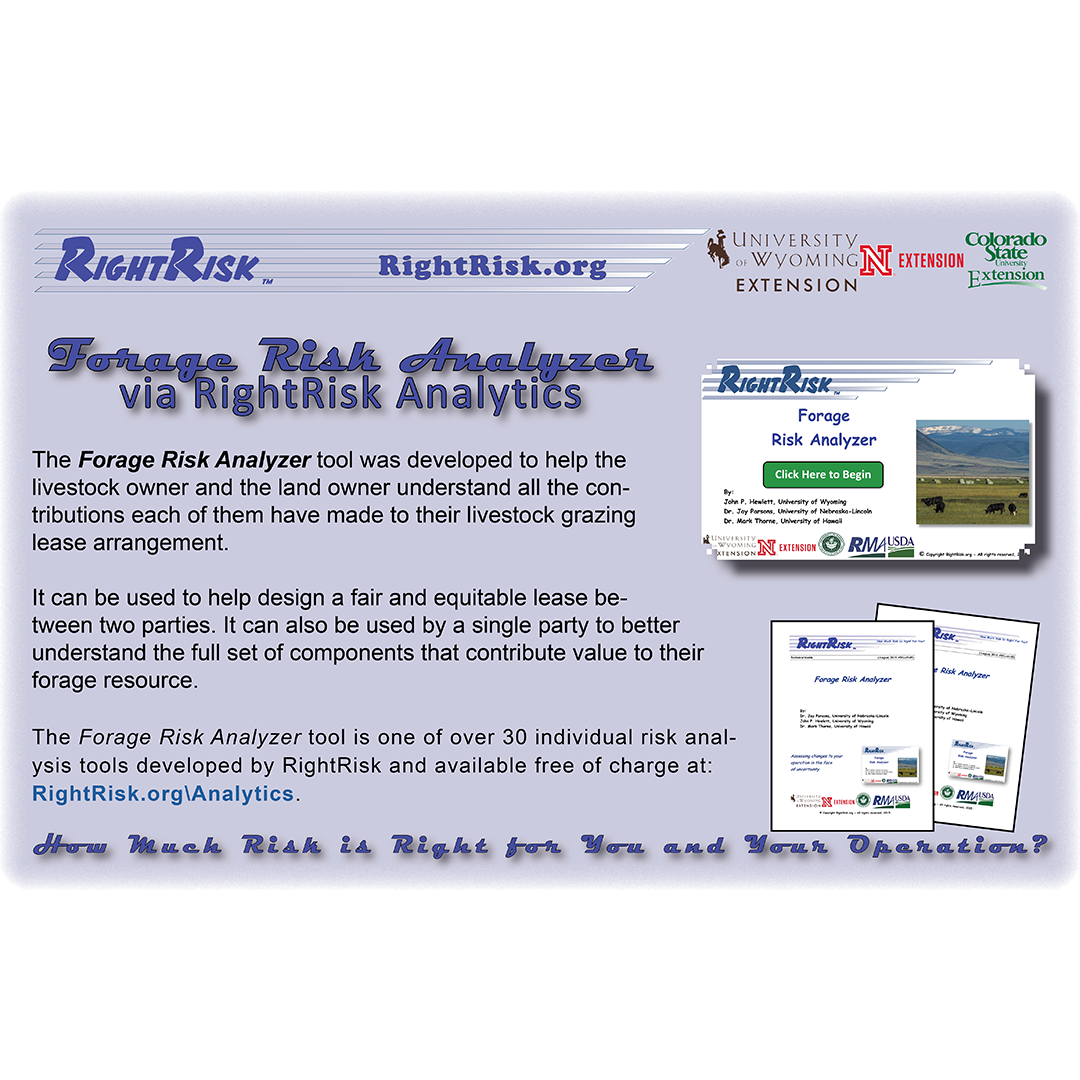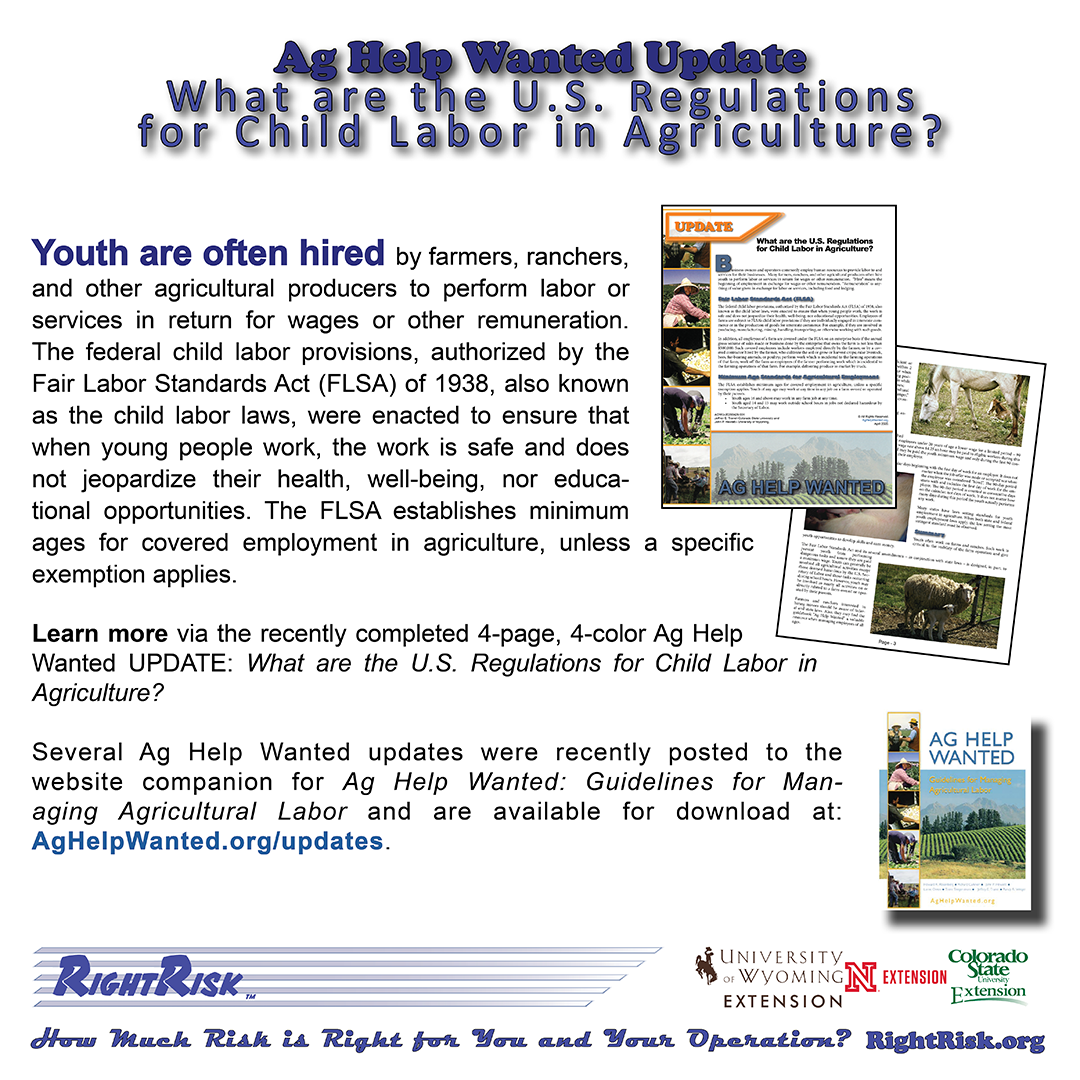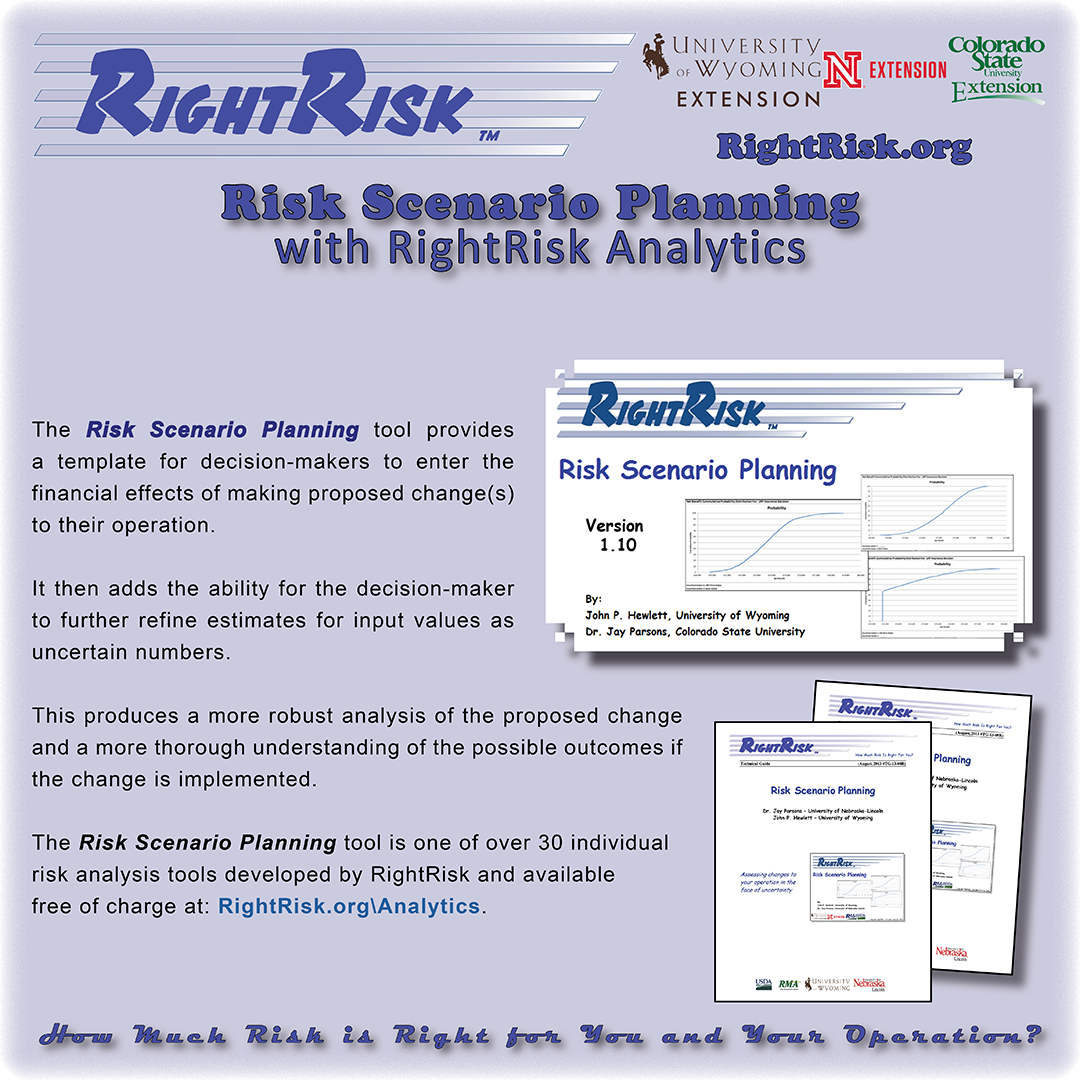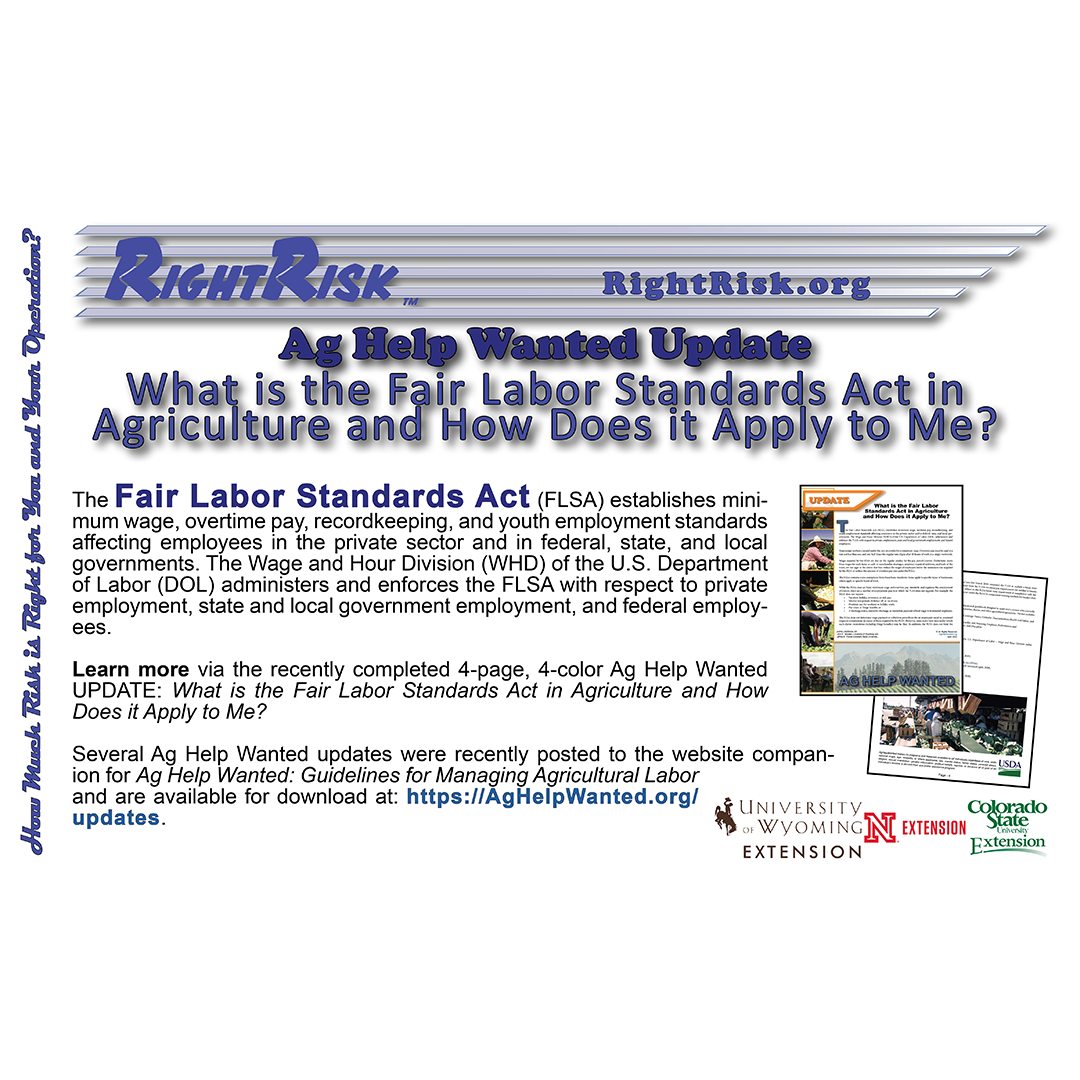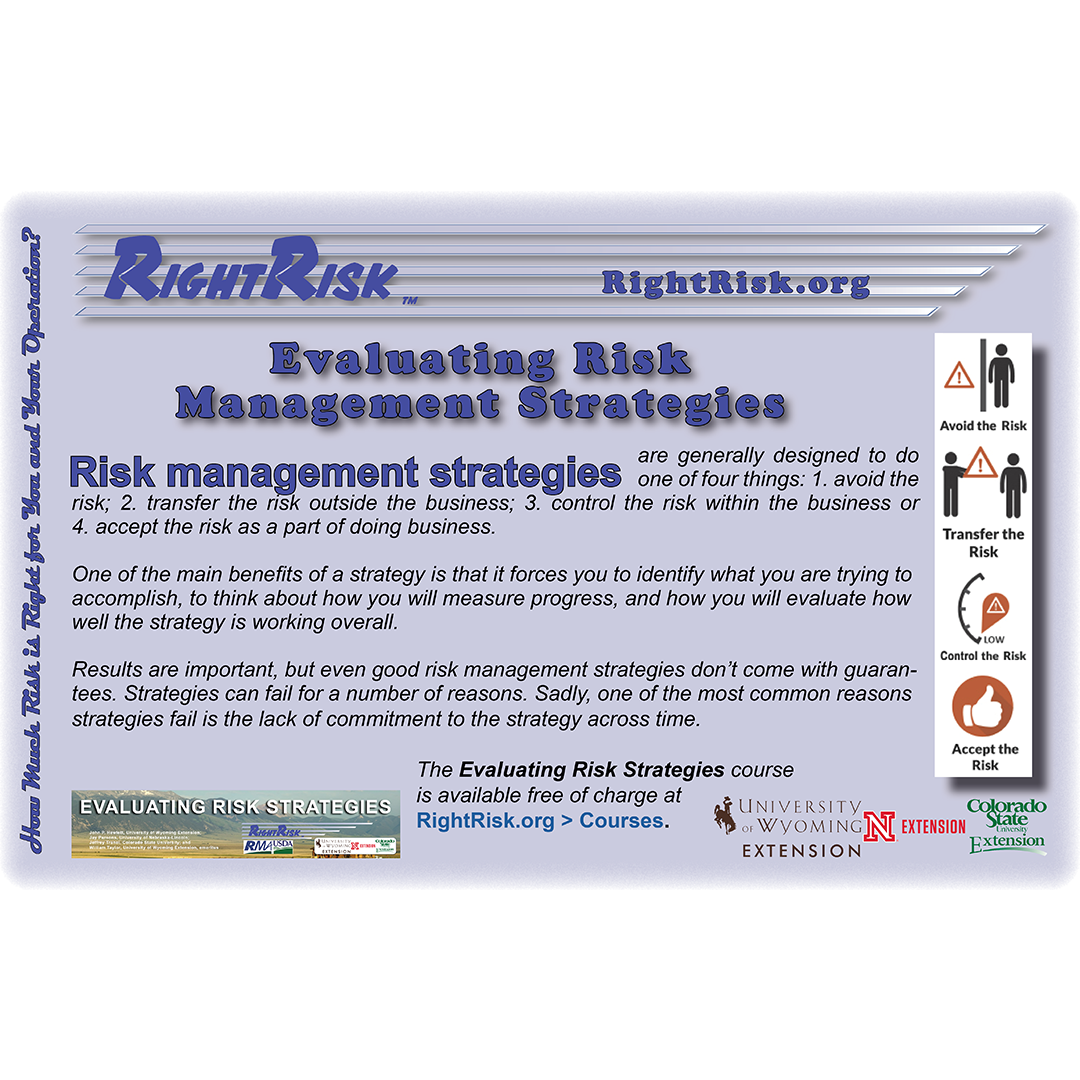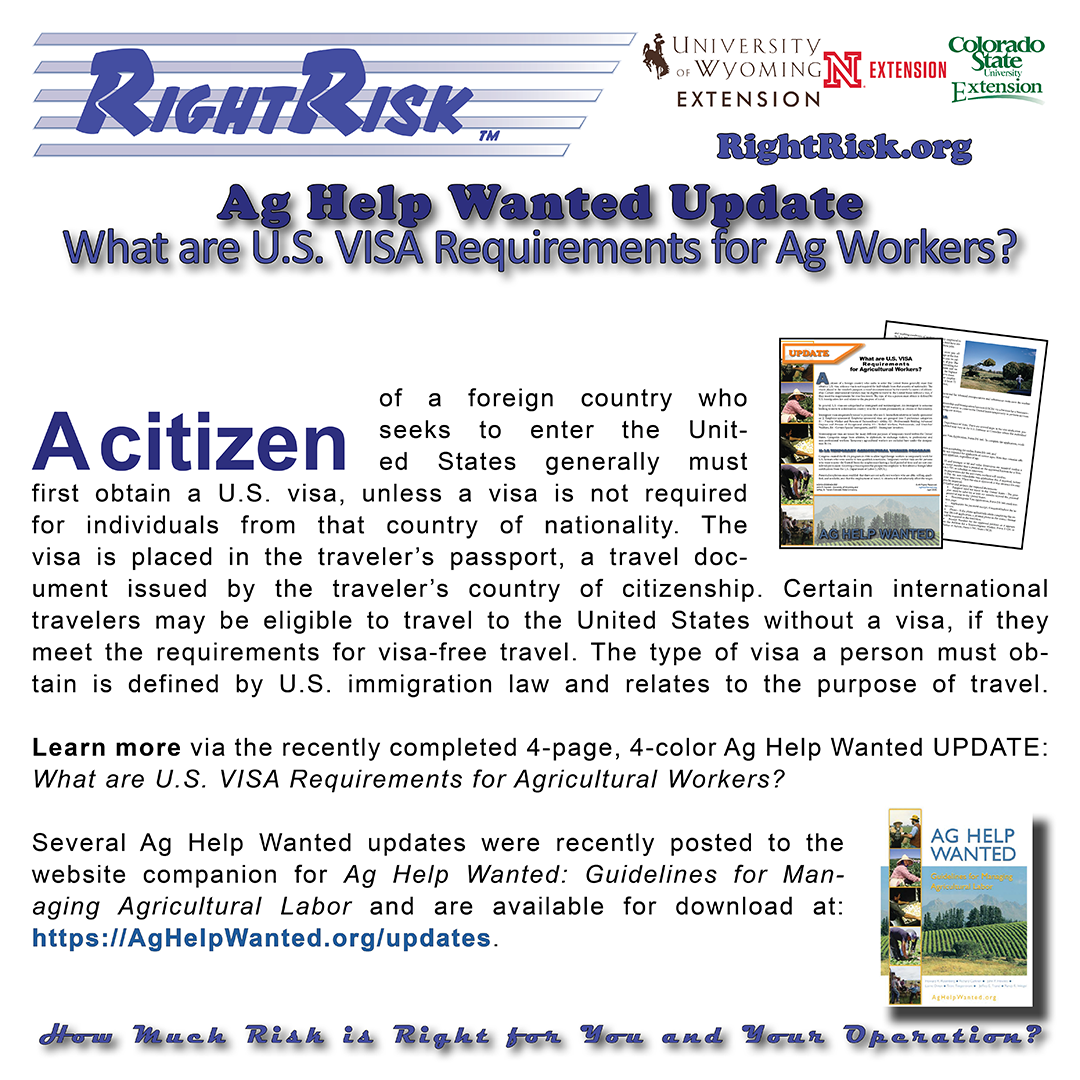Understanding Risk in Agriculture is an internet-based module including: 1) Self-study materials covering- What is risk, Does Risk Matter, Can Risk be Managed, What Are Challenges to Managing Risk, When is Risk Analysis Justified, How are Risky Choices Evaluated, How is Risk Included When Making a Decision, and Conclusion. 2) Recorded webinar- Posted presentation slides, Posted Introduction, Posted URIA – the first four segments, Posted URIA – the last three segments, Posted Q&A session; all in video and audio-only formats; 3) eBook document for further study; and many other features.
The Understanding Risk In Agriculture module is available free of charge at RightRisk.org > Courses.
